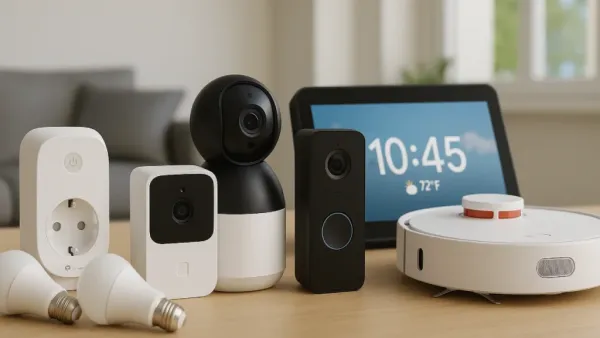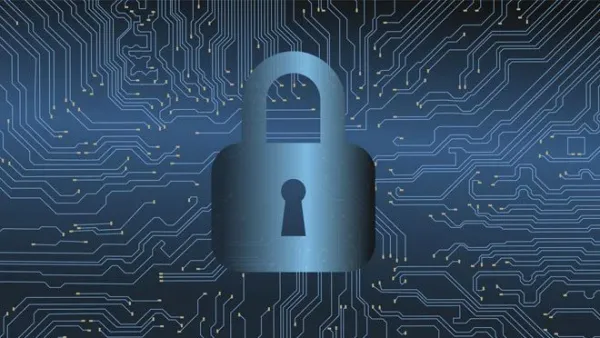
Highlights
- Home IoT devices, from lightbulbs to door cameras, collect and transmit large amounts of personal data.
- Weakly secured devices give hackers an open opportunity to break into your home, spy on you, or steal your identity.
- Knowledge of quickly changing default passwords, regularly updating firmware, and using network segmentation can dramatically improve security.
- AI-based cybersecurity tools are beginning to automate aspects of threat detection and device protection in 2025.
This guide will introduce ways to help you feel secure in your smart home, even if you aren’t tech-savvy.
Smart home devices, such as voice assistants, smart TVs, and connected refrigerators, continue to make our homes “smarter” every year. Although these Internet of Things (IoT) devices provide convenience, they may also open up new, even savvier paths to hackers.

In 2025, the average Indian household with an Internet connection will have at least five smart, connected devices. While many users reap the joys of convenience, hardly any realize how vulnerable they are. That sweet smart plug or baby monitor, once hacked, could compromise your home network, personal files, and yes, potentially your camera feeds.
This article will introduce how IoT devices can be compromised and how to make them safe with simple, implementable knowledge.
Recognizing IoT Weaknesses
The main trait of IoT technologies that makes it both an advantage and a disadvantage is its connection to the internet. Unlike laptops or mobile phones, these devices are typically inexpensive, use less memory, and may have inadequate security.
Security vulnerabilities are:
Having a default username and password (for example, “admin 123”) and not changing the default username and password. Using outdated firmware with no security patches. Communication is not encrypted, making it easier for hackers to use. Security weaknesses with a home Wi-Fi connection, where compromising one device provides access to every device in the home.
From the information gained from these weaknesses, hackers can steal information, spy on individuals, or utilize your device for attacks on other systems using botnets (which are defined as a number of gadgets plugged in or compromised that are under the prior control of the hacker).
Real Risks: How Hackers Attack Homes
In short, hackers do not need to be in close proximity to your house to infiltrate your devices. Many IoT devices are even indexed in public directories like Shodan (considered a search engine for IoT devices). Hackers can find your device online, and they can find out what it is to find out how to attempt to hack it through weak login credentials and any insecure or vulnerable versions of software it might be running.
Some common methods to attack devices are –
Hackers can access your camera and stream private video content live. Hackers can use voice recognition to stream private conversations or issue commands through voice to the smart device. Hackers can remotely unlock or jam a smart digital lock window or door. Readily available hacking tools exploit router vulnerabilities and exploit weak passwords to access the router and get complete access to everything connected through Wi-Fi.

The good news is that cybersecurity technologies have expanded. Today, in 2025, many router manufacturers and cybersecurity-as-a-service companies have incorporated artificial intelligence (AI) into devices to enhance IoT security.
AI can identify atypical activity (for example, a bright bulb trying to transmit data to a foreign IP). .NET can automatically isolate infected objects. Recommendations include security updates or automatically blocking malicious traffic in real time.
With these smart systems, non-technical users can automatically protect their homes without having to monitor each device regularly.
Straightforward Ways to Secure Your Home IoT Devices
You don’t need to be a tech genius to secure your home. A few key practices can have a dramatic impact, such as:
Change the Default Password Right Away
Every new device is equipped with a username and password set by the manufacturer. You should always change it when you set the device up. Use a unique and complicated password or a password manager.
Update the Firmware
Device manufacturers frequently monitor their devices for vulnerabilities and regularly release firmware updates to fix discovered vulnerabilities. If possible, turn on auto-updates or check monthly.
Close Your Wi-Fi Network.
Change your Wi-Fi router username and password from the default. When possible, use WPA3 encryption for a stronger security level. Don’t use the same password for your Wi-Fi network and other accounts.
Create a Dedicated Network for your IoT Devices
Many newer routers have the option to create a “guest” network. Use the guest network for all your IoT devices so they can’t reach any of your main devices, such as your phone and laptop.
Shut Off What You Are not using
Unless you have to run them, turn off things like remote access and location tracking. The more open connections there are, the more points of entry you create for hackers.

Use a Firewall or a Network Monitor App
Many newer routers come with firewalls or allow installing applications that can monitor your network for unusual changes.
Purchase from Reputable Manufacturers
Select IoT items from reliable brands that deliver security updates and robust privacy standards. Contrary to these trusted brands, cheap, unbranded devices are likely stale and dangerous.
The Importance of Privacy
The challenge of “security” isn’t just about thwarting hackers – it’s about your ability to curate who can see your data. A lot of the IoT devices you use send usage data back to the manufacturer daily, if not hourly.
Below is a list of preliminary questions to consider when making a new purchase:
- Confirm you have read the privacy policy (at least quickly).
- Turn off the ability to share and analytics.
- Try not to link too many accounts (e.g., Facebook/Google) to a single device – it increases your exposure.
Currently, the Indian government has enacted the Digital Personal Data Protection Act (2023), which affords users broader rights to manage their data. Awareness of your rights will ultimately enable you to demand better data differentiation from these companies.
The Role of Internet Service Providers (ISPs)
Some ISPs in India have begun selling secure home network packages with automatic malware scanning and parental controls (examples include Airtel, JioFiber). These services may be especially beneficial for families with multiple smart devices or children in the home.
Just as an important note of caution, make sure your ISP respects your privacy and does not rely upon analysis of your data for profit.
Common Misconceptions About IoT Security
Let’s address some false beliefs that are keeping people from protecting their devices:
“I have nothing to hide.”
Even innocuous data like the location of your device or the pattern of its use – could be used to profile or steal someone’s identity in many ways.
“Hackers don’t target ordinary people.”

In practice, you do not need to be “important” to get attacked, as bots simply scan networks automatically.
“Security tools slow down the Internet.”
Newer, more modern, AI-based protection is now available that operates in the background with virtually no impact on speed.
“Changing Wi-Fi passwords is enough.”
While it helps, each IoT device must be individually secured.
What It Will Look Like
By 2030, it is projected that India will have over 2 billion IoT connections, ranging from smart meters in rural areas to appliances in urban environments. The industry is shifting towards Zero Trust Architecture (ZTA) to handle them securely, a model that routes network traffic without automatically trusting devices or users.
Governments and private companies are developing programs to certify the security of IoT devices, with a grade to determine safety before sale. This could be one of the most significant steps forward in consumer awareness.
Conclusion
The convenience of smart homes should not supplant your security or privacy. As IoT devices multiply, the number of entry points for hackers multiplies too – that doesn’t mean you can’t keep connected!

With smart habits and AI-driven protective services, anyone can create a safer, more secure digital home. For example, think of your IoT setup as a real house: lock the doors, check for open windows, and don’t give out keys to strangers.
In 2025 and beyond, cybersecurity isn’t a luxury; it is an act of self-care.
-
I'm A Celeb star thrown off Donald Trump's private jet for bombshell reason

-
Drivers urged to put vinegar in car in November

-
Shirlie Kemp admits she didn't want husband Martin to be James Bond

-
Antoine Semenyo left out of Bournemouth squad as Man Utd and Liverpool alerted to transfer

-
I'm A Celebrity LIVE: Kelly Brook defended over 'bullying' claims by colleague
